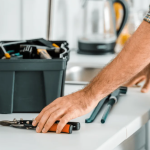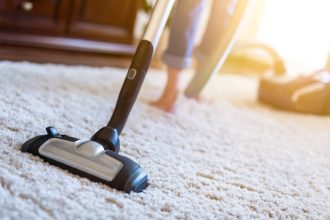Apart from having a foul odor and being unsightly, mold could cause serious problems for you or your loved ones. Babies and the elderly are sensitive to mold. Other at-risk groups are people with skin issues, respiratory problems, or a weakened immunity system.
Do you happen to live in an area that has a warm, temperate climate with significant precipitation? Many cities in the United Kingdom fit this description. Take a quick look at the Lichfield weather details, it shows a temperature average of 9.8 C and precipitation of around 787 mm. Does this kind of weather sound familiar to you? If it does, you will certainly deal with mold-related issues.
What Causes Mold
Mold is present both outside and inside all structures. Mold enters your home through open windows, ventilation systems, or air conditioning systems. You could also be a carrier of mold, as it attaches itself to your clothing and pet fur. According to the Center for Disease Control and Prevention, when mold is in an environment with excess moisture, it will start to grow.
It can be in your leaky roofs, pipes, walls, or indoor plants. The building materials used in the construction of your home could also play a part. Wet cellulose materials like cardboard, wood, paper products are places where mold thrives. Apart from this, dust, paint, carpet, and upholstery are also conducive to mold growth.
What’s more, the belongings you have in your home could be accelerating the growth of mold. If, for example, you have a lot of belongings that are cluttered and taking up space, it can be difficult to clean around them and remove the mold quickly. That’s why asking for assisting for hoarding cleanup is a must-do.
How Mold Can Affect Your Health
If you have dealt with hay fever-like symptoms, such as sneezing, runny nose, red eyes, or a skin rash, you are most likely having an allergic reaction to mold. According to the EPA, mold can irritate the upper respiratory tract even in non-allergic individuals. You are especially at risk if you suffer from asthma since mold can trigger an episode. Studies have shown a link between early exposure to mold during childhood and the development of asthma.
How Can You Control Mold
Keep the windows open but the doors closed
One of the best ways to control mold at home is to ventilate your home as much as you can. Whenever you use the kitchen or the bathroom, make sure that you open your window for a short period. Moisture builds up over time, and letting it flow out will keep it at a healthy level.
At the same time, you need to keep the kitchen and bathroom doors closed when in use. The steam from cooking and the shower can quickly travel through your house and settle in other areas. To give you an idea, cooking produces about 3 liters of water vapor per day and showers produce about 1.5 liters per person. Mold is also most commonly present inside kitchens and bathrooms. Keeping the doors of these areas shut will confine them there.
Interior Decoration
Be on the lookout for any musty odor in rooms that have carpets. Mold is invisible, but its odor is a dead giveaway. It is best to invest in some antimicrobial carpet padding. In case you haven’t, make sure that you get a professional cleaning done once a year. Vacuuming the carpets regularly will also help in controlling mold.
You might love decorating the house with potted plants, but this is a major source of mold. Pots that are used for plants, by their very design, have a water outlet. The moisture is absorbed by wooden floors and carpets, adding to the problem. The soil also holds a lot of moisture since it is away from any direct sunlight.
Other Tips
It is common practice to dry clothes on the radiator. When you dry clothes indoors, it releases about 5 liters of water per load. The moisture from the clothes evaporates and settles into the ceilings and walls. You must keep adequate ventilation when drying clothes. It is better still to invest in a tumble dryer.
Dehumidifiers are one of the best investments that you can make when it comes to controlling mold. Apart from mold dehumidifiers also control mildew and dust mites. On the first use, a dehumidifier can drain almost 20 liters of water from the indoor environment.
These methods will help you in controlling mold to a large extent and spare you and your loved ones from allergies and breathing issues. If you take all these precautions and still notice mold, you can get rid of it using household vinegar. The acidity of white vinegar is capable of removing indoor mold. Remember that mold is always present in the air, but it becomes a problem when it multiplies beyond control.














